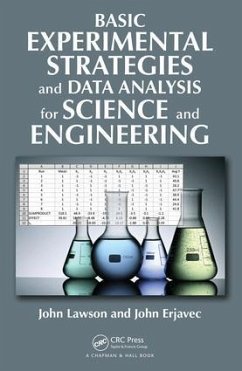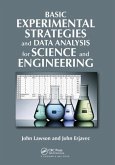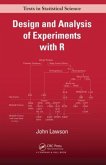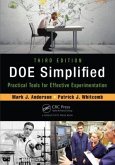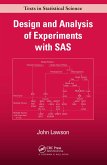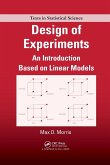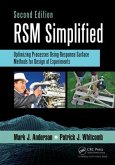Although books covering experimental design are often written for academic courses taken by statistics majors, most experiments performed in industry and academic research are designed and analyzed by non-statisticians. Therefore, a need exists for a desk reference that will be useful to practitioners who use experimental designs in their work. This book fills that gap. It is written as a guide that can be used as a reference book or as a sole or supplemental text for a university course.
Hinweis: Dieser Artikel kann nur an eine deutsche Lieferadresse ausgeliefert werden.
Hinweis: Dieser Artikel kann nur an eine deutsche Lieferadresse ausgeliefert werden.
"The purpose of this book is to educate scientists and engineers on statistical strategies for developing and improving products and processes, because: 'Companies that use these strategies as standard operating procedures can expect large cost reductions in manufacturing, improved product quality, and reduced lead time for the introduction of new products and/or manufacturing methods' (Preface). The material covered in the book has been taught in a one-semester course and portions of the book have been taught in workshop settings."
~Robert Easterling, Technometrics
"This book aims to present the fundamentals of data analysis and interpretation for the sciences and engineering. Overall, the topics are very informative, and the book is dense in useful knowledge. This material is appropriate for undergraduate or graduate level students; it will be of great use to practitioners across a range of technical fields and for professionals who wish to gain a stronger understanding of experimental design and statistics. There is an emphasis on practical working knowledge, with many examples that are detailed enough to seem realistic. The book starts with basic definitions and concepts related to experimental design and does not presuppose a background in this area. Abundant supporting black-and-white figures and tables allow readers to consider the implementation of statistical concepts. A nice benefit is the exposure to a variety of graphical ways to present dataâEUR"from dot plots and dot diagrams to histograms, boxplots, three-dimensional surface plots, etc. The work mentions open source programs as an alternative to commonly used proprietary software, such as Excel and Minitab. The volume is strongly recommended for all readers in the sciences and engineering fields."
~M. R. King, Vanderbilt University
~Robert Easterling, Technometrics
"This book aims to present the fundamentals of data analysis and interpretation for the sciences and engineering. Overall, the topics are very informative, and the book is dense in useful knowledge. This material is appropriate for undergraduate or graduate level students; it will be of great use to practitioners across a range of technical fields and for professionals who wish to gain a stronger understanding of experimental design and statistics. There is an emphasis on practical working knowledge, with many examples that are detailed enough to seem realistic. The book starts with basic definitions and concepts related to experimental design and does not presuppose a background in this area. Abundant supporting black-and-white figures and tables allow readers to consider the implementation of statistical concepts. A nice benefit is the exposure to a variety of graphical ways to present dataâEUR"from dot plots and dot diagrams to histograms, boxplots, three-dimensional surface plots, etc. The work mentions open source programs as an alternative to commonly used proprietary software, such as Excel and Minitab. The volume is strongly recommended for all readers in the sciences and engineering fields."
~M. R. King, Vanderbilt University

